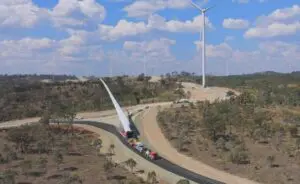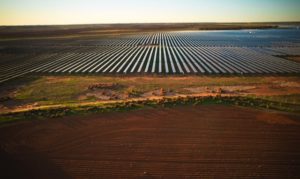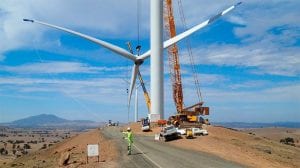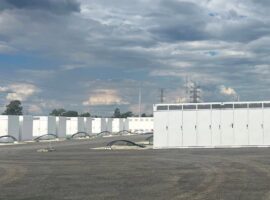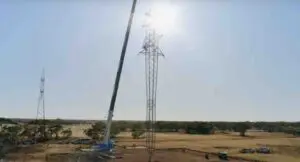The head of the Australian Energy Market Operator, Audrey Zibelman, has expressed caution about suggestions that new wind and solar farms should have to match their entire capacity with an equivalent amount of battery storage.
The need for wind and solar farms to include battery storage was raised by chief scientist Alan Finkel in his recently released review, although it left such requirements at the discretion of the AEMO.
However, energy minister Josh Frydenberg has been arguing, in both the Coalition party room and in public lectures, that the ratio should approximate one megawatt hour for every megawatt of installed capacity.
Although many wind and solar farms, both new and existing, are considering adding storage to shift their load or provide network services, the requirement of matching each MW for MWh is seen as overkill, and an attempt to turn wind and solar into baseload generators, when flexibility and reliability is the key.
“The idea that as you put in wind and solar (you need to have a certain amount of dispatchable power), the question becomes, to what level?” Zibelman said when asked by RenewEconomy.
“This is a dynamic issue. So having generators purchase a certain amount (of storage) and thinking (in terms of) once that is done, is probably not going to be the optimal way forward.
“Is that the optimal way to get resources in – in other words to have a static approach – or should we create a dynamic approach where AEMO identifies the amount of reliability that’s required; there’s a mechanism to procure it in the system; and we do it in the most economic way?” Zibelman said.
“We need to make sure the system remains reliable. …The concern I have… is that if you leave it and we set a static number, there’s only one thing that we can be clear about, and that is that it is probably going to be wrong. It’s either going to be too much or too little.
“So we’re going to want think about how do we approach this in a much more dynamic way, with changing the nature of the system.
”So, while I get the desire, I think we would like an opportunity to explore, is that the best result for consumers.”
The CSIRO and Energy Networks Australia have pointed out that most Australian grids will likely not need significant amounts of storage anytime soon because anything less than 30-50 per cent penetrations is “trivial”.
South Australia, however, is reaching saturation, which is why the world’s biggest lithium-ion battery storage project will be located there, followed by others which will allow more wind and solar farms.
Zibelman, speaking at a CEDA conference in Melbourne, said her organisation and others wanted to “get on with it” and implement some of the much needed reforms in the energy market, including some of those identified in the Finkel Review.
“100 per cent of people I have talked to across the industry are saying ‘we’ve got to get on with it,” she said.
“We’re a Coalition of the willing (she said in reference to AEMO and the heads of other institutions such as the Australian Energy Regulator, headed up by Paula Conboy, and the Australian Energy Market Commission, led by John Pierce.
“Paula and John and I want to get on with it. … we’ve got to make these changes. We don’t want to waste this crisis.”
Zibelman said she was looking forward to the COAG meeting on Friday and wants them to endorse broad recommendations of Finkel.
“(We’re not only solving issues for Australia) …we’re solving issues for the rest of the world,” she said. “We have to remember that economics is driving all of this. It’s not just about policy.”



